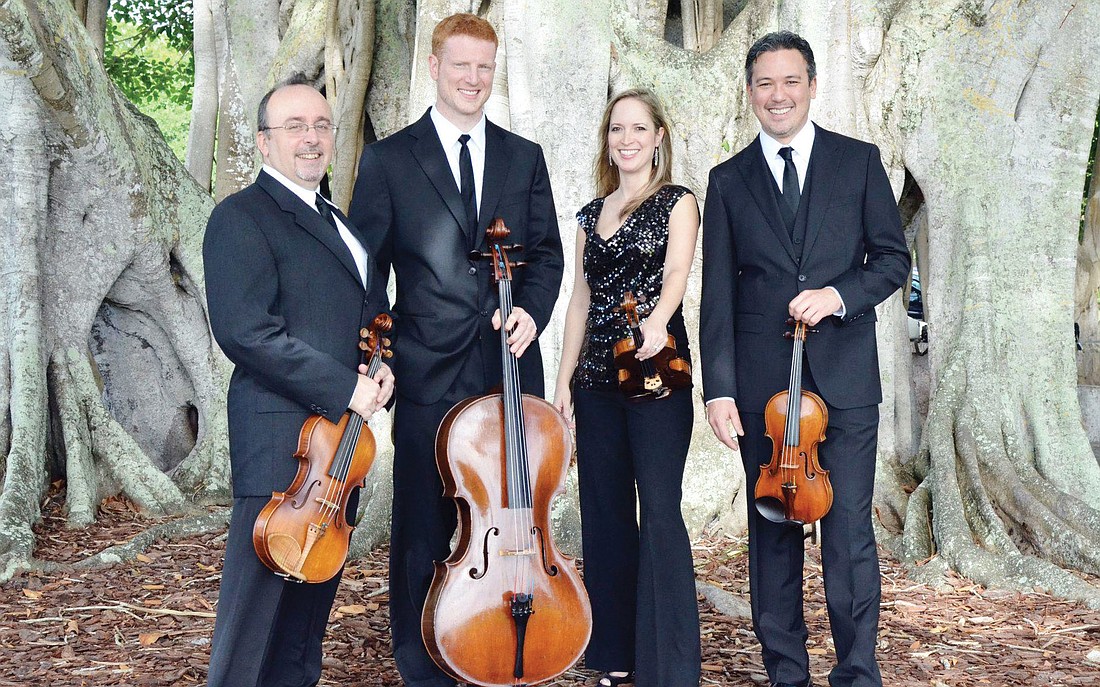- April 24, 2024
-
-
Loading

Loading

The Chroma Quartet has been together since 2008, but it’s only this season the group really made a splash on the Sarasota music scene. The players — violinists Christopher Takeda and Jennifer Best Takeda, violist Michael McClelland and cellist Abraham Feder — are all members of the Sarasota Orchestra but, unlike several other chamber groups that are under the mantel of the orchestra, this ensemble is on its own. As a result, the members have had to fend for themselves in terms of fundraising, publicity and venues — and they’ve done really well.
This year, Chroma presented three concerts for the First Tuesdays at First Church series, appearing there to bigger and bigger audiences each time. And with good reason.
Chroma’s programs are unique and fascinating. Its last concert, about a week ago, was called “Seriously Joking!” and went from Haydn’s E-flat Quartet — known as “The Joke,” to Beethoven’s Quartet in F Minor, subtitled, “Serioso,” with a charmingly quirky, awaard-winning “Half-Diminished Scherzo,” by Piotr Szewczyk, in between.
Along with the clever programming, Chroma plays well. Haydn’s “Joke” is a serious work filled with insider music pranks along with some obvious gags that can put the audience in musical stitches. It’s also an extremely exposed piece that leaves intonation and blending vulnerable but, except for some rare balance nuisances, Chroma pulled it off with a pure, straight execution that had the audience chuckling along with the unexpected syncopations and multiple false endings.
The “Half-Diminished Scherzo” offers intricate rhythmic pulses, intriguing cascades of almost modal-sounding scales and a slow passage layered with shimmering intervals and tiers of colorful chords that were densely written but well-defined in the hands of Chroma. The late afternoon sun streaming through the church’s stained glass windows added a visual illumination that made this work particularly inspiring. And the sanctuary’s acoustics, unequaled in Sarasota, helped delineate the wondrous sound of this work, which has won awards for Szewczyk.
One of the inspired Chroma trademarks is that each of the group’s members speaks to the audience as an introduction to each piece. Charming, witting and informed, they add their own personalities to the mix of music, making these concerts enlightening as well as entertaining.
In an introduction to the Beethoven, Feder quoted Joseph Kerman, author of “Beethoven Quartets,” with the best description of the “Serioso” Quartet I’ve heard: “It’s impulsive, defiant, pained, adversarial … The F Minor Quartet is not a ‘pretty’ piece, but it is terribly strong — and perhaps rather terrible … Everything unessential falls victim, leaving a residue of extreme concentration … ”
Feder called the work “compressed music,” and the performance that followed was as expressive and descriptive in the Chroma’s playing as the words were in Feder’s introduction.
Chroma is an ensemble that jokes with charm while playing with great seriousness. The group will be presenting its second season —the first Tuesdays of February, March and April — next year in the Music Fine Arts series at the First United Methodist Church. I suggest you get a subscription before it sells out.